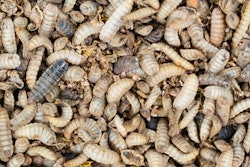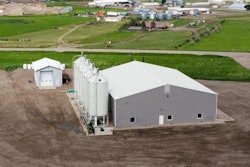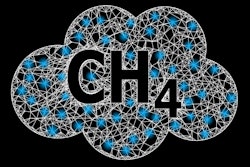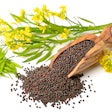
Using asparagopsis, the emissions-reducing seaweed feed additive, to control enteric emissions from feedlot cattle may be more complicated than researchers first thought.
In a study led by the University of New England, feeding cattle asparagopsis oil only curtailed methane emissions by about 28% compared with a diet without the feed additive. The oil also reduced feed intake by a little less than 8%, resulting in a proportionate decrease in weight gain among cattle fed the additive. The decline in productivity could potentially offset the reduction in emissions if producers fed animals for longer periods to make up for the slower growth, according to the study.
But the feeding trial came after another study in which researchers at the University of New England were able to drop emissions from cattle fed a common feedlot diet by 95% using the same asparagopsis oil. That suggests it was not the oil, but something about differences between the two studies that produced the disappointing results in the second trial, according to Fran Cowley, an associate professor of livestock production at the University of New England.
While more research is needed to verify exactly what triggered the difference, Cowley suspects it could have been a difference in diet that prompted the disparate study results. The cattle in first trial at the university research faculty were fed a high-grain diet, while the cattle in the second, which took place at a commercial feedlot, received a diet with a higher proportion of roughage.
Other factors could have contributed as well. The two studies used different breeds of cattle, with the first employing 20 Angus heifers, while the second involved a wagyu cross. The second trial also used a lower dose of asparagopsis oil at the request of the commercial producer, which had calculated what it believed would be the most cost-effective rate of inclusion.
Asparagopsis, Cowley said, may not be a silver bullet that works everywhere.
Cowley said the unexpected results from the feedlot trial were probably not the end for asparagopsis, but they were likely the end of the beginning phase of research that focused primarily on the safety and efficacy of the feed additive. The results open a host of questions about the best applications for asparagopsis and other methane-reducing feed additives, but Cowley said she would prioritize resolving the emerging issue around feed intake. If producers are expected to adopt these additives, she said, the additives will need to represent an economic solution for producers, and reduced feed intake and productivity make that goal difficult to achieve.
Cowley believes the reduced feed intake may be related to the production of hydrogen in the rumen in the absence of methanogensis, which asparagopsis suppresses. The prevailing theory is that in the absence of the enzymatic reactions that produce methane, hydrogen produced in the rumen is used for fatty acid production, which should in turn improve feed efficiency. However, it's also possible, Cowley said, that this hydrogen simply builds up within the rumen, causing a sense of satiety in the animal. She noted that the study found no evidence that the cows became ill or experienced pain in the course of the study.
If that's the case, Cowley said, the solution may simply be a matter of feeding asparagopsis alongside diets formulated to compliment the use of asparagopsis, but more work will be necessary to tease out what that diet might look like — and why, exactly, the efficacy of asparagopsis seems to vary so widely.














